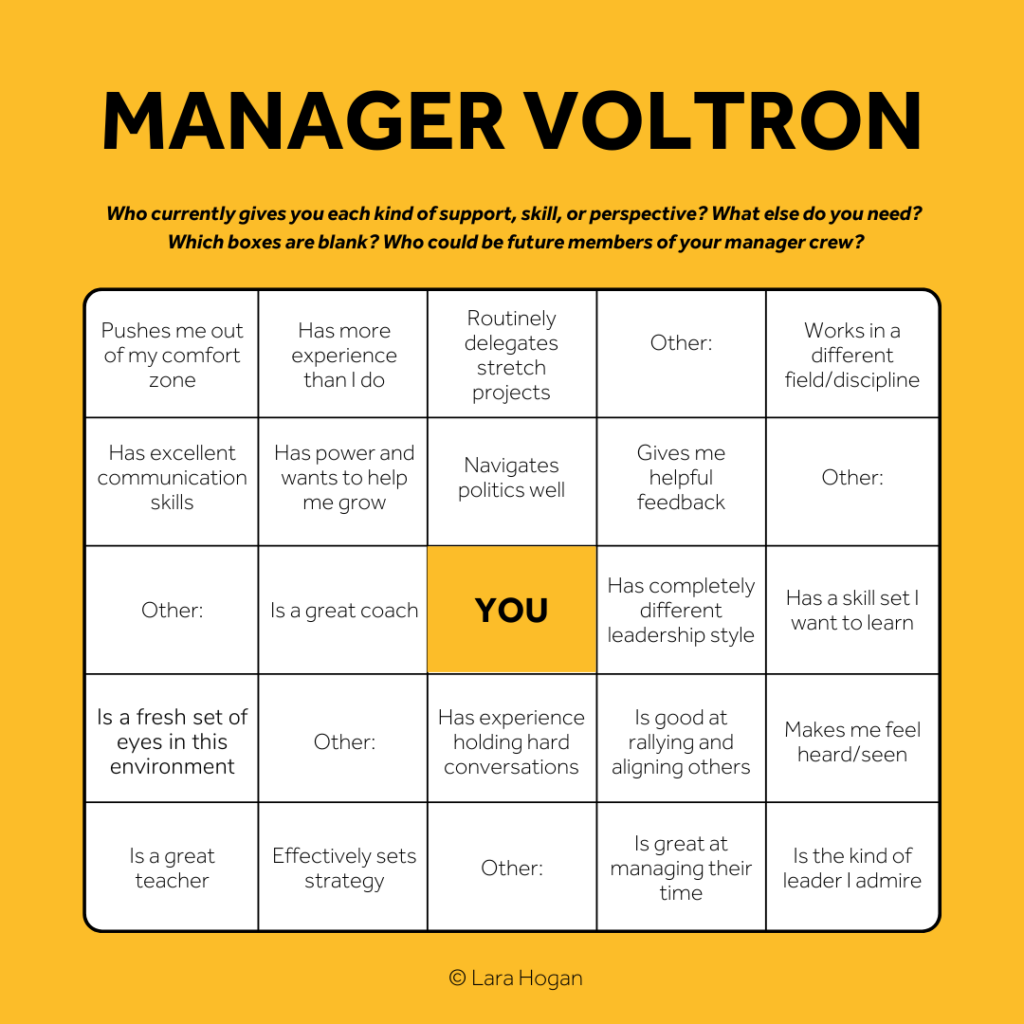I’d not given any real thought to keeping a generationally-diverse group of folks around me until my editor at my first gig reporting for the Syracuse Post-Standard (now syracuse.com) told me to. Years later, I learned the importance of building strategic relationships — especially around my work and career aspirations.
This week’s challenge is for you whether you have a dope direct manager or not. And it’s definitely for you whether you’re leading a team or not. Why?
Because many of us are either working with folks who equate managing to leading, or we’re figuring out the Rubik’s Cube of being a people leader instead of an individual contributor. The former is more communal while the latter can feel isolating. Both are tough places to be.
The challenge:
Unavailable. Inaccessible. Under water. Burned out. Disengaged. Apathetic. Feeling like a fraud. Lacking clarity or direction. Needing more support. Needing more green lights than red; more transformational conversations than transactional ones.
I won’t continue because we’ve all been in a situation where we needed more — whether from ourselves, for ourselves, or from others. And the news industry we care so deeply for makes this harder as we’re doing more work (emotional labor definitely included) with fewer and fewer people by the year. Shoot, by the quarter.
Whether you have a manager who’s growing you or shrinking you, it’s important to know that putting the onus on one person alone for your growth and success is never fair. What you need are co-collaborators and co-conspirators — across generations, genders, racial identities and more.
The assignment: Build a “Manager Voltron”
Author and leadership coach Lara Hogan shared this concept of a “manager Voltron” in 2018 when she admitted to having her fair share of bad managers, or at least, bad fits for managers. She writes:
Here’s the bad news: [Managers] are human. They have multiple objectives and responsibilities. They probably don’t have all the relevant training or experience. They probably haven’t gotten clear feedback. And they’re still growing and learning, just like you.
But here’s the good news: There are a plethora of people out there whom you can lean on to find the variety of support you need.
Make it happen
- The goal: To build your perfect manager by thinking beyond your direct supervisor
- How to: Fill in the “Manager Voltron” BINGO card below (or download the PDF)
- Consider your “other” boxes as an opportunity to add a skill or trait that is unique to your needs and desire to grow. (For example, I would add “is tolerant of risk” and “can always find the punchline” because part of my ability to grow, especially amid adversity, is being supported even when I fail and being able to laugh even if that means pausing the work.)
- It’s okay if you don’t fill in all the boxes. What’s left empty is an opportunity for further interrogation. What do you need? How will you grow this year? How might you be filling, or leaving blank, someone else’s boxes?
If you get stuck, or want to read more before assembling your “Manager Voltron,” check out this article by Hogan. If you find your network to build a resilient and all-knowing Voltron is limited within the news industry, do look outside of it.
Share with your network
Leadership reset
You also might be interested in:
It’s been a busy year for us: we held three API Local News Summits, built out a comprehensive guide to partnering with influencers, encouraged experiments with grants and cohorts, and supported news organizations with our products.
Today, we’re undergoing a bold transformation — reimagining ourselves as a platform that fosters generational solidarity and serves bicultural audiences from Gen Z to Boomers.
As director of inclusion and audience growth, Harris-Taylor will continue API’s efforts to drive organizational and cultural transformation while sharpening its commitment to diversity, equity, inclusion and belonging. She’ll also work to deepen API’s partnerships with community organizations and non-news experts.




